Meet the Garden Spider: Weaver of Sunshine and Master Predator
The garden spider, scientifically known as Argiope aurantia, is a familiar sight to many. These striking arachnids are common inhabitants of gardens, fields, and forest edges across North America. Their large, orb‑shaped webs, often adorned with a zig‑zag pattern called a stabilimentum, are a testament to their incredible engineering skills. But these spiders are more than just beautiful web‑spinners; they are fascinating creatures with a rich history, complex behaviors, and a vital role to play in the ecosystem.
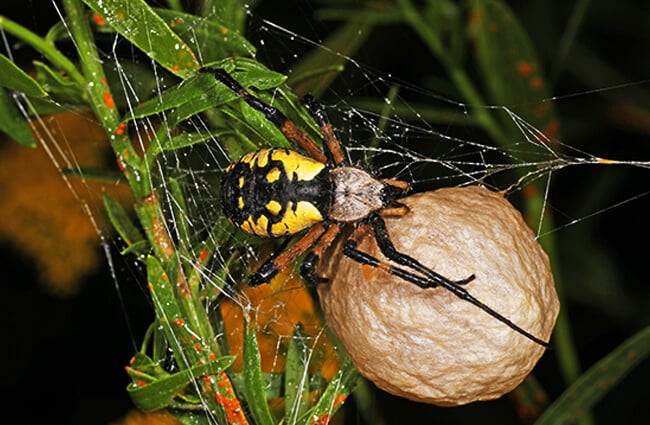
Habitat and Distribution: Where do Garden Spiders Live?
Garden spiders are widely distributed throughout North America, ranging from Canada to Mexico. They prefer open, sunny habitats with plenty of vegetation. These locations provide the perfect anchor points for their webs and attract the insects that form the bulk of their diet. You’ll frequently find them in gardens, orchards, meadows, and along forest edges. They are not typically found in heavily shaded areas or deep within forests. The spider builds its web usually between 2 to 6 feet above the ground, taking advantage of sunlight and insect traffic.
A Glimpse into Garden Spider Evolution
The evolutionary history of the garden spider, like that of all spiders, traces back to ancient arachnids that first emerged over 300 million years ago. Argiope, the genus to which the garden spider belongs, is a relatively well‑studied group within the orb‑weaver spiders (family Araneidae). Orb‑weavers are characterized by their ability to construct intricate, circular webs – a trait that has likely conferred a significant evolutionary advantage. The unique stabilimentum found in many Argiope species, including the garden spider, is thought to have evolved for various reasons, including camouflage, web strengthening, and attracting prey. Modern genetic studies are helping to refine our understanding of the evolutionary relationships within the Argiope genus and trace the origins of specific traits like the striking coloration and web patterns seen in the garden spider.
Diet and Hunting Strategies: A Web of Deception
Garden spiders are carnivorous predators, and their diet primarily consists of flying insects. Common prey items include grasshoppers, flies, bees, wasps, and even small moths. They are not active hunters in the traditional sense. Instead, they rely on their webs to capture prey. When an insect flies into the web, the spider quickly immobilizes it with silk, wraps it tightly in a cocoon of silk, and then injects it with venom. This venom not only paralyzes the prey but also initiates external digestion, turning the insect’s insides into a nutritious liquid meal. The spider then consumes the liquified remains.
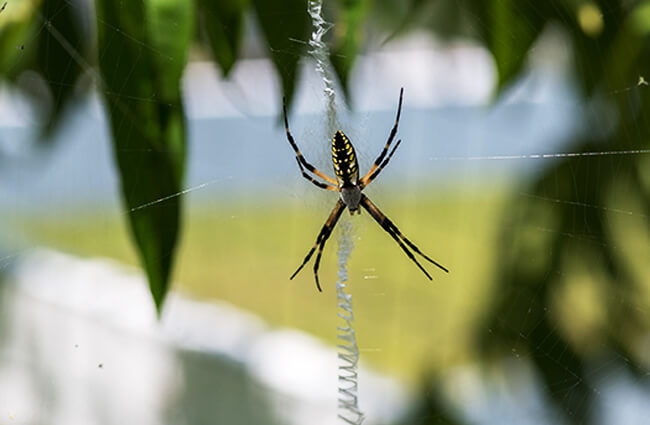
Life Cycle: From Egg Sac to Adult Spider
The life cycle of a garden spider begins with eggs laid inside a silk egg sac. This egg sac, which is typically brown or tan in color, is attached to vegetation near the web. The eggs are laid in late summer or early fall, hatch in spring, and the spiderlings do not emerge until the following spring. These young spiders are miniature versions of the adults, and they disperse by ballooning – releasing silk threads that catch the wind and carry them to new locations. They undergo several molts as they grow, shedding their exoskeletons to accommodate their increasing size. Garden spiders typically live for only one year, completing their life cycle in a single season.
Mating and Reproduction: A Risky Business
Mating in garden spiders is a somewhat precarious affair. Males are significantly smaller than females, and they must approach with caution to avoid becoming a meal themselves. The male begins by building a small mating web near the female’s web and performing a courtship dance, using vibrations and signals to demonstrate his intentions. If the female accepts his advances, mating occurs. However, in some cases, the female may attack and kill the male after mating. This behavior, known as sexual cannibalism, is thought to provide the female with additional nutrients for egg production. After mating, the female creates several egg sacs, each containing hundreds of eggs.
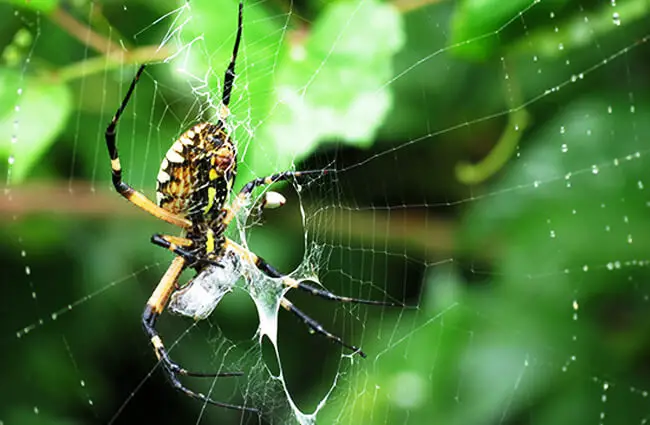
Ecological Role and Interactions
Garden spiders play a vital role in controlling insect populations. As predators, they help to keep numbers of potentially harmful insects in check, benefiting gardens, farms, and ecosystems. They are also prey for birds, wasps, and other predators, forming an important link in the food web. Their webs provide habitat and shelter for other small invertebrates. The spider’s impact on the ecosystem is significant, contributing to the balance and health of natural communities.
Garden Spiders and Humans: A Peaceful Coexistence
Garden spiders are generally harmless to humans. They are not aggressive and will rarely bite unless provoked. Their venom is not considered dangerous to humans, causing only mild local irritation. In fact, they can be considered beneficial companions in gardens, helping to control pests. Many people appreciate their beauty and the intricate designs of their webs. While their presence may occasionally startle, they pose no real threat and contribute to the biodiversity of our landscapes.
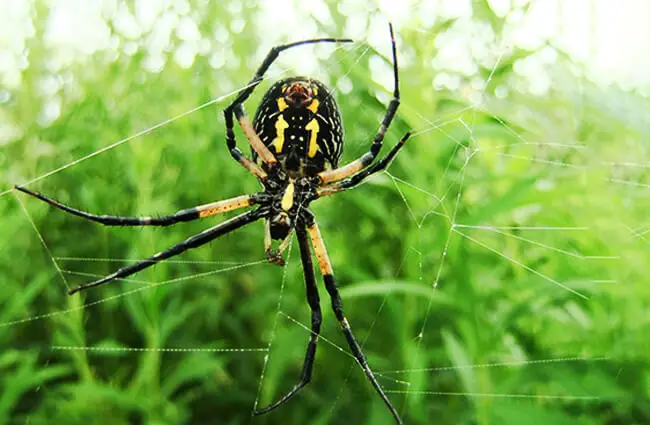
Interesting Facts About Garden Spiders
- Stabilimentum Purpose: The zig‑zag pattern in the web, known as the stabilimentum, may serve multiple purposes, including camouflage, strengthening the web, and attracting prey.
- Silk Production: A single garden spider can produce several meters of silk in a single day.
- Web Recycling: Garden spiders often dismantle and recycle their webs, reclaiming the silk for use in new webs or egg sacs.
- Male Size: Male garden spiders are much smaller than females, often less than a quarter of the female’s size.
- Ballooning: Young garden spiderlings disperse by ballooning, using silk threads to travel long distances on the wind.
- Color Variation: While typically yellow and black, garden spiders can exhibit some variation in coloration, with some individuals appearing more orange or reddish.
For the Aspiring Zoologist: Deeper Dive
Research into Argiope aurantia continues to reveal fascinating insights into spider behavior, silk properties, and evolutionary adaptations. Current areas of study include the chemical composition of silk, the neural mechanisms underlying web construction, and the role of visual cues in prey capture. Genetic analyses are also helping to unravel the evolutionary history of the Argiope genus and identify the genes responsible for specific traits.
Encountering a Garden Spider: What to Do
If you encounter a garden spider in the wild, it’s best to observe it from a distance. Do not attempt to handle or disturb the spider, as this may cause it to feel threatened and potentially bite. If a spider has built a web in an inconvenient location, you can carefully remove the web using a broom or other tool. Avoid using insecticides, as these can harm beneficial insects and other wildlife. Remember, garden spiders are harmless and play a valuable role in the ecosystem.
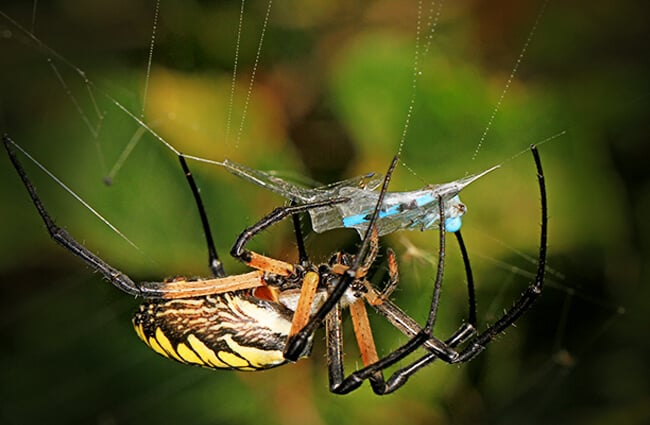
Caring for Garden Spiders in Captivity: A Zookeeper’s Guide
Keeping garden spiders in captivity requires careful attention to their needs. Provide a spacious enclosure with plenty of vertical climbing space. The enclosure should be well‑ventilated but secure to prevent escape. Maintain a temperature range of 70‑80°F and provide a humidity level of 60‑70%. Feed the spider live insects, such as crickets or mealworms, every few days. Provide a source of water, such as a shallow dish or spray bottle. Avoid handling the spider, as this can cause stress. Regularly clean the enclosure to prevent the buildup of waste and maintain a healthy environment. Observe the spider for any signs of illness or injury and consult with a veterinarian if necessary. Avoid introducing any artificial chemicals.

The garden spider, with its striking appearance and fascinating behaviors, is a remarkable creature that deserves our respect and appreciation. By understanding its life cycle, ecological role, and unique adaptations, we can better appreciate the biodiversity of our natural world.

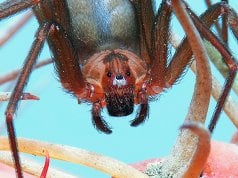
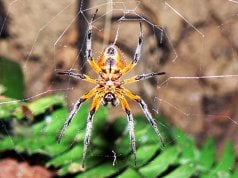

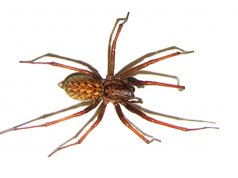

![Red Angus Closeup of a beautiful Red Angus cowPhoto by: U.S. Department of Agriculture [pubic domain]https://creativecommons.org/licenses/by/2.0/](https://animals.net/wp-content/uploads/2020/03/Red-Angus-4-100x75.jpg)

